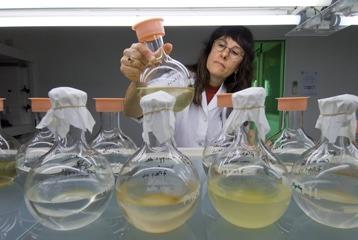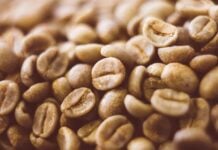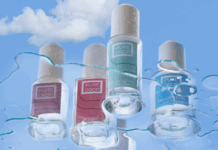How to develop "green" chemistry? Using biomass, a renewable carbon source, as a raw material, is the approach chosen by a unique network. Created by the CNRS with support from the Aquitaine Limousin Poitou-Charentes region (€1.165 million), Increase is a public-private collaborative network dedicated to eco-design and renewable resources. It currently brings together almost 200 researchers from eight research laboratories, and chemical manufacturers (in sectors such as cosmetics, food and detergents). Building on the synergy between research and industry, Increase aims to carry out cutting-edge research while integrating the issues involved in bringing sustainable chemical products and processes to market in France and internationally. Increase also aims to become a global reference network for biomass valorization using physical methods.
Green chemistry, geared towards a "more sustainable way of life", is booming today, especially as it is becoming economically profitable and competitive in certain areas. One of the current areas of development is the use of renewable resources, such as biomass, to the detriment of oil. This is the challenge taken up by Increase, a research federation under the aegis of the CNRS, which has just been created with the support of the Aquitaine Limousin Poitou-Charentes region.
This collaborative network currently comprises eight research laboratories in the fields of chemistry, agronomy, engineering and human and social sciences, mostly located in the west of France. This first circle will work in synergy with the R&D departments of several industrial companies (large groups as well as SMEs). Increase aims to become an international network for biomass research and industrial applications. And it will be able to draw on both the scientific expertise of its academic laboratories and the know-how of manufacturers.
Another Increase objective is to promote the education of young researchers and the dissemination of knowledge on green chemistry topics, through the organization of the World Green Chemistry Congress (ISGC, held every two years) and conferences for the general public.
All organic matter of plant, animal or fungal origin can be considered as biomass: it therefore represents an immense deposit of renewable carbon from which an extremely rich and varied chemistry can be produced. Increase will focus on lignocellulosic biomass, such as wood and straw. Only non-food biomass sources, such as agricultural residues and waste, will be transformed.
Energy (heating, electricity) is the best-known use of biomass. But with Increase, it's the manufacture of products of interest - surfactants, polymers, solvents, flavors, etc. - that will be at the forefront. - will take center stage. Biomass has applications in a wide range of industrial sectors, from cosmetics and materials to pharmaceuticals and food. Biomass contains numerous molecules of interest (sugars, oils, aromatic compounds, amino acids, etc.) that chemists are now capable of separating and transforming. The aim here is not to produce molecules or materials similar to those already on the market, but to synthesize renewable products offering superior performance to those made from fossil fuels.
List of eight research laboratories belonging to Increase :
- Institut de chimie des milieux et des matériaux de Poitiers (IC2MP, CNRS/Université de Poitiers)
- Center de recherche sur l'intégration économique et financière (Crief), University of Poitiers
- Institut des sciences chimiques de Rennes (CNRS/Université Rennes 1/ENSC Rennes/INSA Rennes)
- Biopolymers, interactions and assemblies (BIA, INRA Nantes)
- Laboratoire Littoral, environnement et sociétés (CNRS/Université de La Rochelle)
- Institute of Molecular Sciences (CNRS/Université de Bordeaux/Bordeaux INP)
- Organic Polymer Chemistry Laboratory (CNRS/Université de Bordeaux/Bordeaux INP)
- Chemical Engineering Laboratory (CNRS/Université Toulouse III - Paul Sabatier/INP Toulouse)








